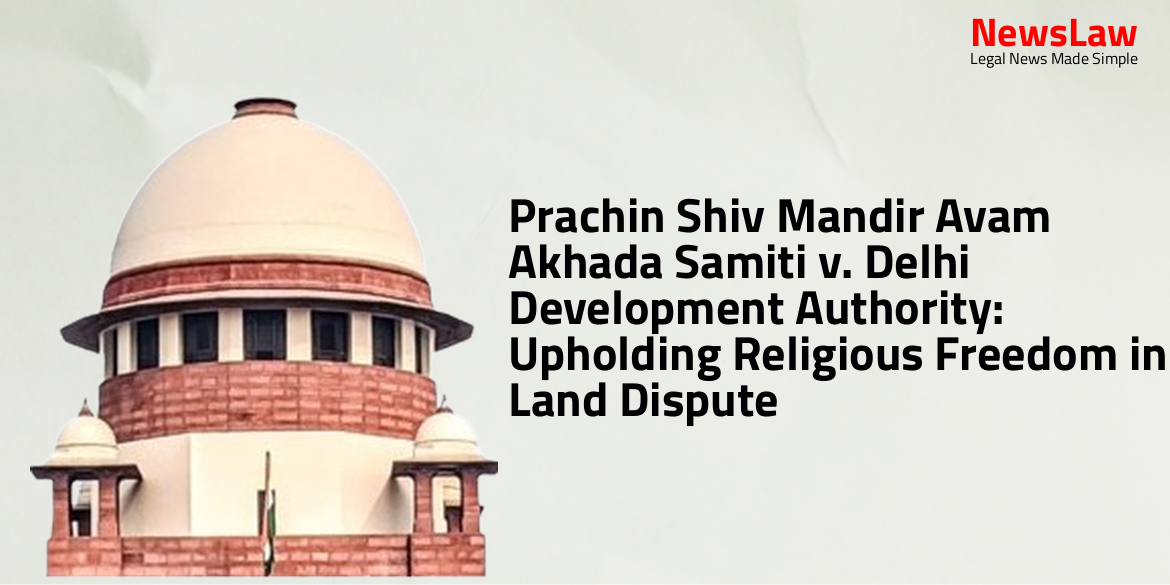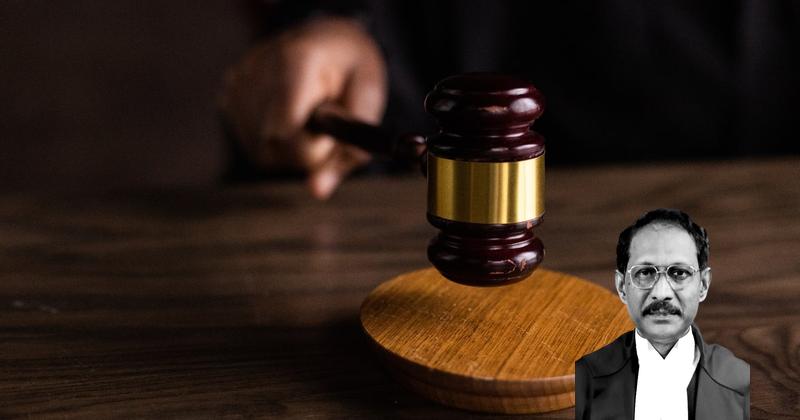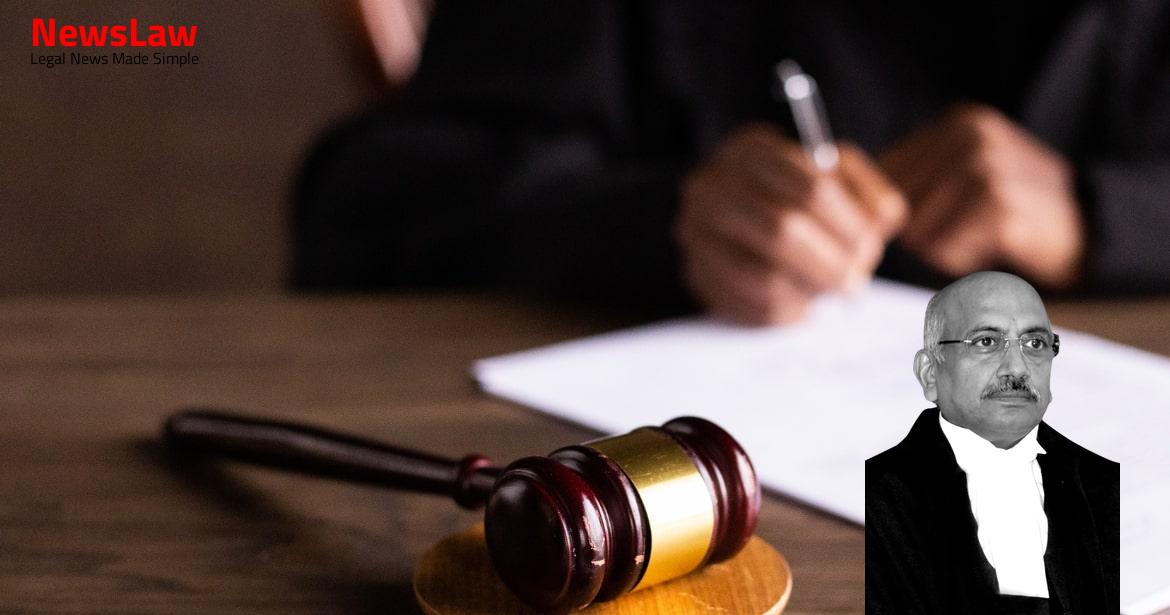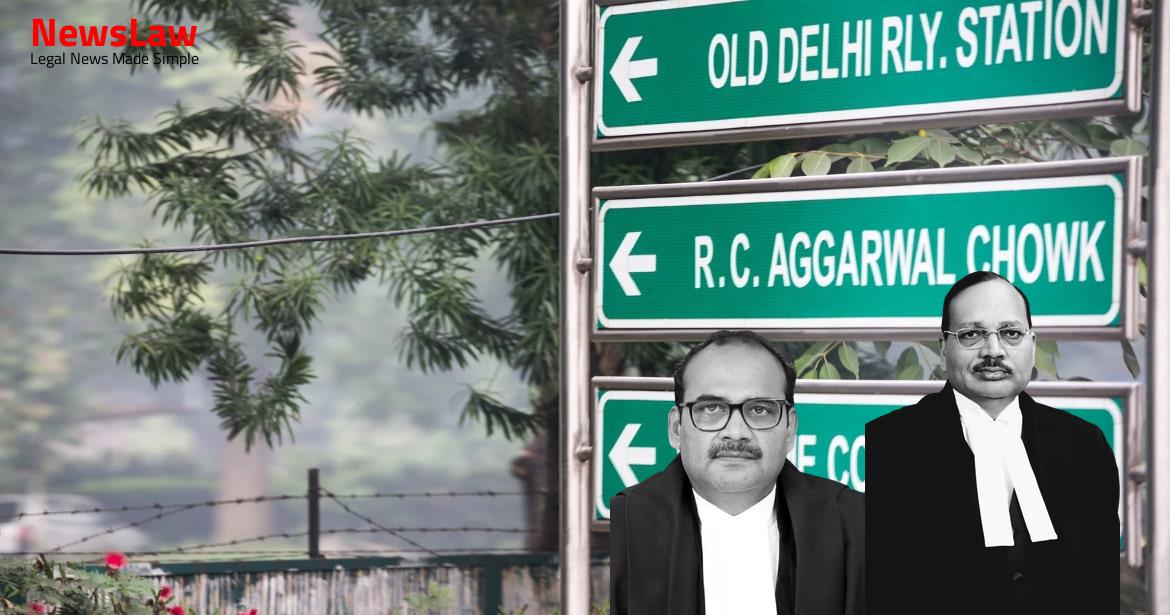In the recent case of Prachin Shiv Mandir Avam Akhada Samiti v. Delhi Development Authority, the Delhi High Court delivered a crucial judgment on religious freedom in a land dispute. The case involved the Prachin Shiv Mandir Avam Akhada Samiti seeking recovery of land possession in a disputed area near Taj Enclave, Geeta Colony. The court’s decision sheds light on the protection of religious sites and the balance between public and private endowments in temples. Let’s delve into the details of this landmark verdict.
Facts
- The issue of removal/demolition of religious structures near Taj Enclave, Geeta Colony was taken up by the Religious Committee.
- The Prachin Shiv Mandir Avam Akhada Samiti, registered under the Society Registration Act, is seeking recovery of land possession in a disputed area.
- The temple, known for the founding of 101 Shiv Lingas, serves as a spiritual hub drawing 300 to 400 devotees regularly.
- A Religious Committee meeting held on 17.08.2023 discussed granting permission for the removal of unauthorized religious structures in the Yamuna Floodplains area.
- DDA, under directives of the LG of Delhi, demolished 15 religious structures in the floodplain area.
- A Delhi Police inspection found the Mandir Cluster at Yamuna Khadar, Geeta Colony, with no proof of existence or a caretaker.
Arguments
- Article 25 guarantees freedom of religion and the right to administer religious matters to all citizens.
- Temples and places of worship are of great religious significance and protecting them is crucial for upholding religious freedom.
- Referring to the case of Ms Hnunpuii vs. Municipal Corporation of Delhi, the court emphasized the importance of natural justice and providing a fair hearing before demolishing any unauthorized property.
- Compliance with principles of natural justice is essential, regardless of whether the affected parties have a defense to offer.
- The DDA contends that the Pracheen Shiv Mandir is located within the Restoration & Rejuvenation of Yamuna River Floodplain Asita East UP Land, and there is no demolition/removal program planned.
- The DDA is not the land-owning agency, and the area where the temple is situated was determined to be owned by the State of UP in a previous case.
- Unauthorised religious structures were found on the land, prompting legal action by the State of UP against the defendants.
- Illegal activities such as cultivation, nurseries, labour huts, dairy, and gaushalas were demolished by the Horticulture Division and other departments of the DDA as per NGT mandates.
- NGT directives prohibit illegal activities in the Yamuna Floodplain, including unauthorized religious structures.
- The petitioner society argues that proper procedural fairness requires official written notices for significant governmental actions like demolition orders.
- In the case of Ram Lakhan Singh v. State of Uttar Pradesh, the importance of providing formal notice before demolition actions was emphasized.
- No official written notice was given to the devotees of the temple about the impending demolition, as they were verbally informed that another temple was being demolished on the same day.
Analysis
- The Mahant of the temple held out and represented it as a public temple where all Hindus could worship.
- The Mahant’s conduct indicated a dedication of the temple to the Hindu public.
- Inferences from evidence on temple endowments and public temple usage were crucial in determining the case outcome.
- The distinction between public and private endowments hinges on specific individual beneficiaries for private endowments and the general public or a class thereof for public endowments.
- The case Ankit Mishra v. Santosh Sharma explained the legal position on the nature of temples in similar circumstances.
- In Narayan Bhagwant Rao Gosavi Balajiwale v. Gopal Vinayak Gosavi, factors like temple vastness, construction mode, longstanding public use, grants, and other relevant aspects indicated a public nature of the temple.
- Documentary evidence in the case clearly established temple properties belonging to the temples and the manager’s role as a trustee.
- The Mahant’s income from the temple was primarily used for temple expenses with the surplus supporting the Mahant and his family.
- The additional pleas regarding the State of UP and DDA’s locus standi were deemed unsubstantiated due to lack of evidence in the case record.
- The Memorandum of Understanding dated 16.02.2022 between the State of UP and DDA authorized DDA to handle the rejuvenation project of the Yamuna river flood plain, establishing DDA’s responsibility for quality and adherence to specifications.
- The petitioner society failed to provide any documents proving their title or interest in the land, and there was no historical significance of the temple mentioned.
- The DDA was empowered to deal with the site in question, as endorsed by a resolution passed by the Religious Affairs Committee in a report dated 17.08.2023.
- The orders and directions from various committees and courts highlighted the need for removal of encroachments, rejuvenation projects, maintenance of ecological balance, and the role of different agencies in the restoration of the Yamuna river flood plains.
- The counsel for the petitioner attempted to involve Lord Shiva in the dispute but was unsuccessful, indicating a hidden agenda.
- The court finds no legal basis for the petitioner society to continue using civic property for the temple.
- Clearing encroachments from the Yamuna River bed and flood plains would please Lord Shiva.
- It is we who seek Lord Shiva’s protection and blessings, not the other way around.
Decision
- The present Writ Petition is dismissed.
- The local police and administration must ensure the following actions are taken.
- If the idols are not removed within 15 days, DDA should relocate them to another temple.
- DDA is allowed to demolish the unauthorized construction.
- Petitioner society must not obstruct the demolition process.
- 15 days given to the petitioner society to remove idols and religious objects from the temple.
Case Title: PRACHEEN SHIV MANDIR AVAM AKHADA SAMITI Vs. DELHI DEVELOPMENT AND ORS. (2024:DHC:4423)
Case Number: W.P.(C)-12817/2023



